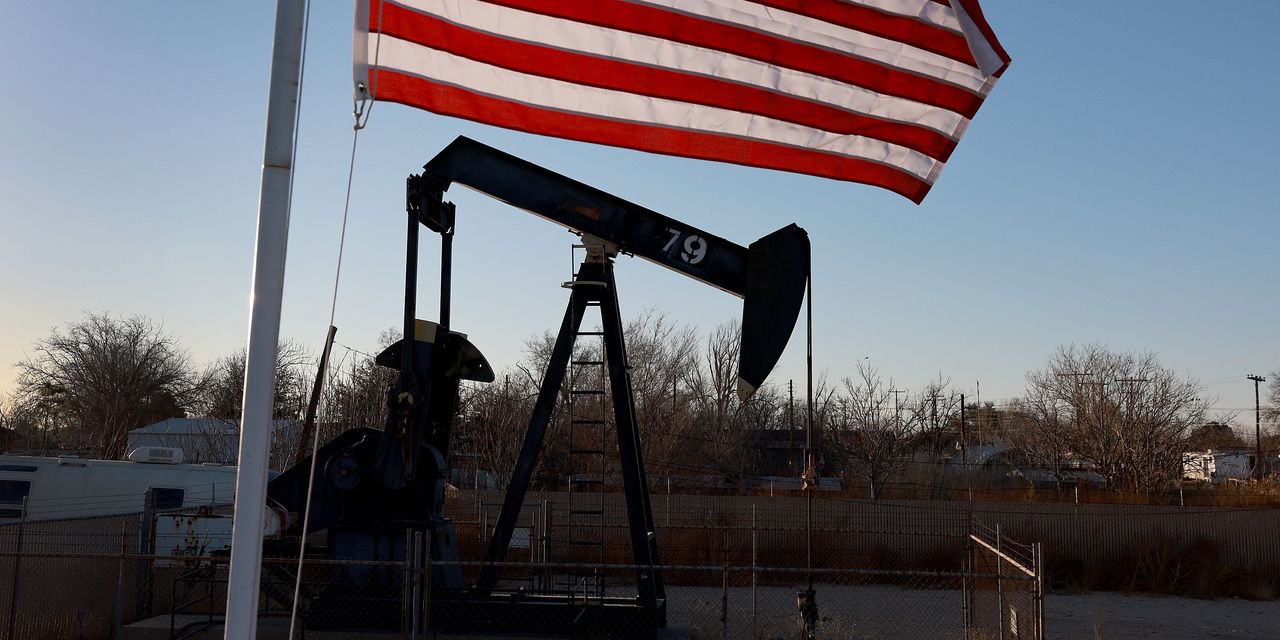Oil futures were building on gains Thursday, finding support after a report China may ease quarantine restrictions on visitors to the country.
Price action
-
West Texas Intermediate crude for November delivery
CL.1,
+1.81% CLX22,
+1.81%
rose $1.96, or 2.3%, to $87.51 a barrel on the New York Mercantile Exchange. December WTI
CL00,
+1.42% CLZ22,
+1.42% ,
the most actively traded contract, was up $1.67, or 2%, at $86.19 a barrel. -
December Brent crude
BRN00,
+1.15% BRNZ22,
+1.15% ,
the global benchmark, gained $1.51, or 1.6%, to trade at $93.92 a barrel on ICE Futures Europe. -
Back on Nymex, November gasoline
RBX22,
+1.42%
rose 1.2% to $2.684 a gallon, while December heating oil
HOZ22,
-0.68%
was up 0.2% at $3.568 a gallon. -
November natural gas
NGX22,
+0.62%
was up 0.6% at $5.499 per million British thermal units.
Market drivers
Crude oil was on track for back-to-back gains after bouncing Wednesday as data showed a drop in U.S. crude inventories while President Joe Biden on Wednesday announced the release of a further 15 million barrels of crude from the Strategic Petroleum Reserve, the final tranche of an 180 million barrel release authorized in March.
“Given that this volume is part of the previously announced larger release, the impact on the market is minimal. This is reflected in price action with WTI settling 3.3% higher yesterday,” said Warren Patterson, head of commodities strategy at ING, in a note. “This latest release will do little to offset the impact of OPEC+ supply cuts.”
Read: Why you can’t count on another SPR oil release to cut gasoline prices at the pump
OPEC+ — made up of the Organization of the Petroleum Exporting Countries and its Russia-led allies — agreed earlier this month to cut production by 2 million barrels a day beginning in November. However, the size of the actual reduction is expected to be around half that size since several members were already producing below their quotas.
Bloomberg on Thursday reported that Chinese officials were debating whether to ease quarantine requirements for visitors to the country. China currently requires incoming visitors to quarantine for seven days in a hotel room followed by three days at home where they remain subject to monitoring and testing.
An easing of the quarantine rule would be an incremental change but it may signal the potential for a revival of economic growth. The country’s zero-COVID policy has resulted in massive lockdowns and other restrictions that have served to crimp demand for crude and energy.
“China had been expected to ramp up oil imports as it agreed to export 113 million barrels of oil products between now and the end of the year; there has, however, been little sign of increased spot purchases by the world’s second largest consumer,” said Harry Altham, an energy analyst at StoneX Group, in a note.
“By reviving an economy beset by COVID restrictions, such moves could provide a lifeline to China’s struggling airline industry,” he wrote.
The Energy Information Administration on Thursday said U.S. natural gas in storage rose by 111 billion cubic feet in the week ended Oct. 14. Analysts surveyed by the Wall Street Journal, on average, had looked for an injection of 102 billion cubic feet.
